Steampunk webcam
In a previous article, we wrote about how to develop a webcam. Now we have a ready-made prototype, and we want to share with you a story about how it was created.
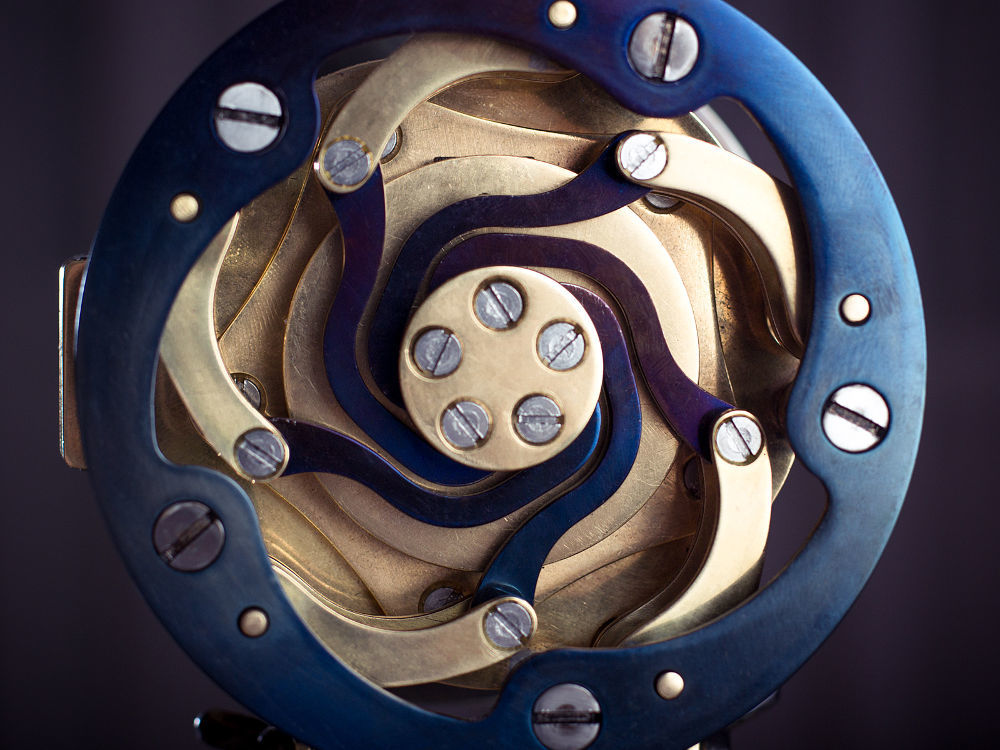
The prototype webcam was developed by Andrei Korobov. For convenience, further narration will be conducted on his behalf.
I always liked mechanical art and ancient mechanisms. In my professional activity, I develop mining high-voltage equipment, simplicity and reliability are important there, and there is no place for beauty and technical refinement.
For a long time I wanted to make a steampunk product with working mechanics, I drew sketches of different mechanisms and stopped on a webcam with a mechanical shutter. The idea arose from the fact that cases of hacking webcams are common. Therefore, a conventional webcam can create discomfort and a closed lens solves this problem.
It was decided to make a shutter with rotary petals resembling a diaphragm. The optimal number of petals turned out to be 5, since they do not abut against the axis of rotation of each other and dimensions can be reduced.
Several options for kinematics were considered.
The first option is a gear with internal gearing.

This option did not fit, because I’m not sure about the operability of the mechanism with the accuracy available to me.
The second option with traction to the rotary ring.
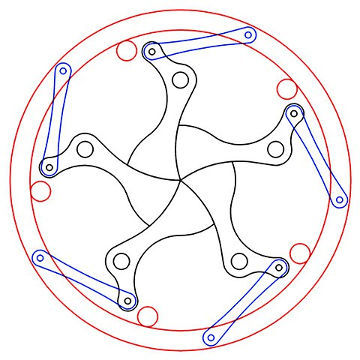
It was difficult to ensure the reliability of the movement of the ring.
There was even an option with a chain, but could not find a chain with small links.
As a result, an option was chosen with a linkage mechanism working between the dead points, which made it possible to ensure the necessary accuracy of movement with low accuracy of the leading link.
When choosing a webcam for work, the logitech c270 was taken due to its high quality and reliability. More advanced models, such as c910, were also considered, but its board extended in both directions would significantly increase the size of the case. The dimensions of the c270 camera also caused difficulties due to the non-symmetrical placement of the lens. Therefore, such a design was invented. In the future, we plan to use the logitech c310 camera, which in some respects is better than the c270, although not by much, but even in appearance with a better lens.

Initially, it was decided to automatically open and close the camera when turning on / off the broadcast / recording. A transistor was connected to the camera LED, which switched the relay controlling the motor. With the help of reed switches and a magnet, the circuit opens when the drive rod reaches the desired position.
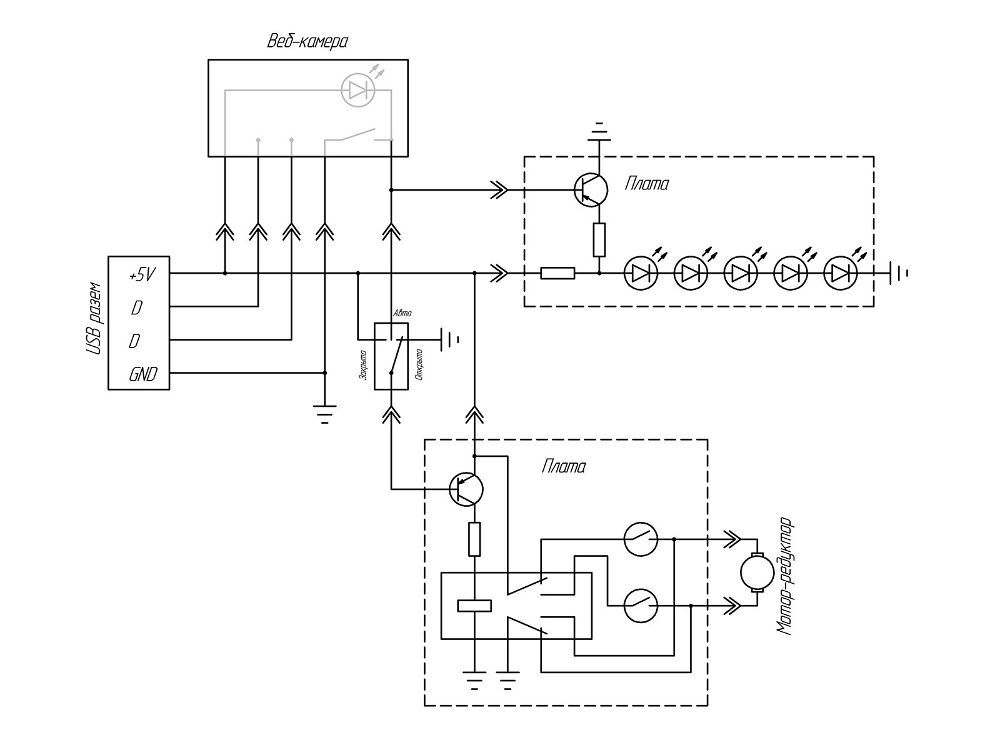
In the future, we want to add a switch of the shutter operation mode to open / close / automatically, as shown in the diagram above. And also add a separate transistor for LEDs, which will not always light up when the shutter is open, but only if camera recording is on. As an addition, we consider the installation of an ionistor so that the shutter can close when the camera is disconnected from the usb connector. So far, that they have not figured out how to implement this, perhaps someone will tell us in the comments how this can be done beautifully and safely.
Blanks for the camera made of sheet brass and steel were made by laser cutting. There were no problems with parts made of thin brass and steel. And the edges of brass 2.5 mm thick turned out to be foamed. Therefore, we plan to use waterjet cutting for batch production.
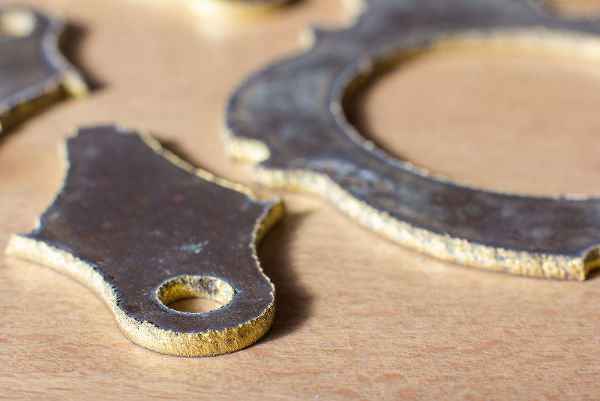
When we ordered turning of rollers, racks and legs, few people wanted to do this. We thought about buying a lathe, looking for options we found out that at the moment only Chinese models are sold from turning desktop machines. Not everything is good with used machines either, the old TV-16 and TV-4 models are already worn out and it’s difficult to find a good option. And we thought about making our machine. So maybe in the future we will write an article about this.
Subsequently, manual processing of all parts was in progress. The required holes were deployed by reamer for greater accuracy. Countersinks made recesses for countersunk head screws with straight slot. All parts were polished with fine sandpaper and GOI paste.
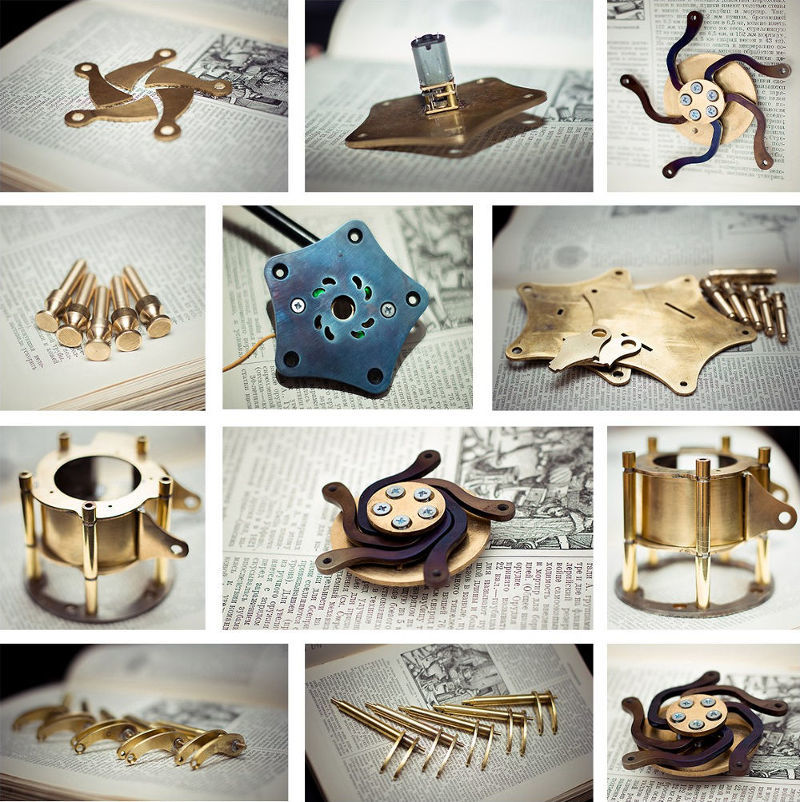
Soldering was carried out using a gas stove, a cylinder burner, solder paste and solder. The difficulty was the soldering of additional elements so that the already soldered ones did not solder. A wet cloth was used for this.
The petals were initially soldered with a gap, after which the gap was measured, the roller was installed in a vice, so that the petal was with the necessary gap until it stops. Then the petal was heated and turned until it stops. In the series we will use levers with adjustable.
In the series, instead of a USB connector there will be microUSB and it will be located on the bottom of the protrusion.
What we got in the end, you can see the video and photo below.
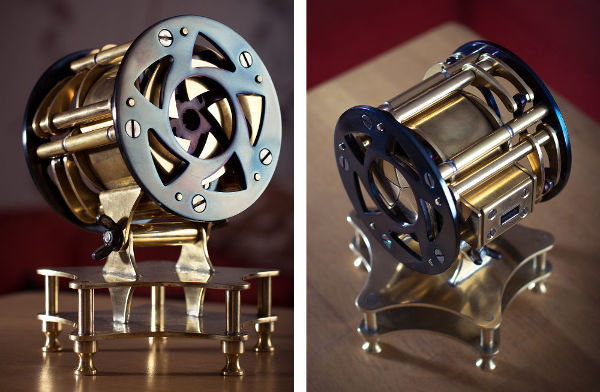
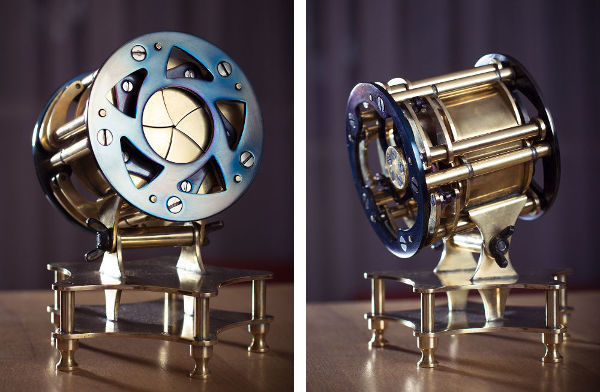
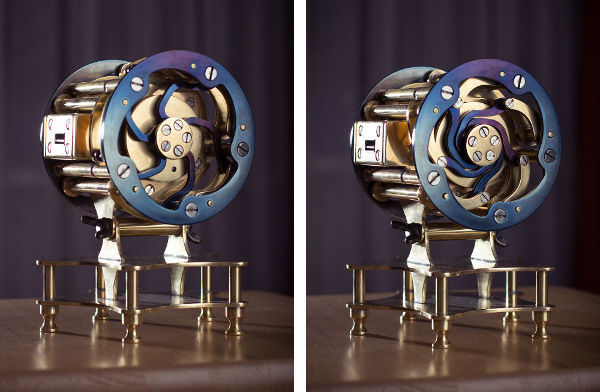
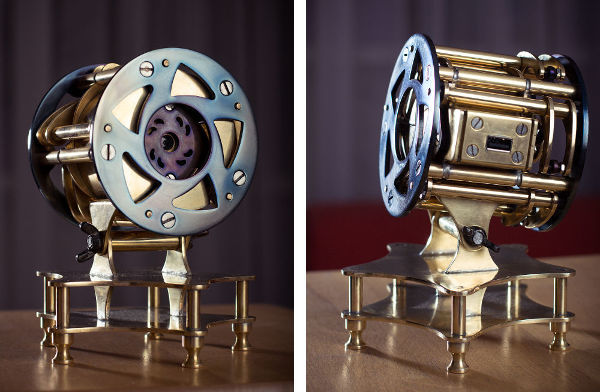
Now we are raising funds for the production of a limited series of webcams on boomstarter.

The prototype webcam was developed by Andrei Korobov. For convenience, further narration will be conducted on his behalf.
I always liked mechanical art and ancient mechanisms. In my professional activity, I develop mining high-voltage equipment, simplicity and reliability are important there, and there is no place for beauty and technical refinement.
For a long time I wanted to make a steampunk product with working mechanics, I drew sketches of different mechanisms and stopped on a webcam with a mechanical shutter. The idea arose from the fact that cases of hacking webcams are common. Therefore, a conventional webcam can create discomfort and a closed lens solves this problem.
It was decided to make a shutter with rotary petals resembling a diaphragm. The optimal number of petals turned out to be 5, since they do not abut against the axis of rotation of each other and dimensions can be reduced.
Several options for kinematics were considered.
The first option is a gear with internal gearing.

This option did not fit, because I’m not sure about the operability of the mechanism with the accuracy available to me.
The second option with traction to the rotary ring.

It was difficult to ensure the reliability of the movement of the ring.
There was even an option with a chain, but could not find a chain with small links.
As a result, an option was chosen with a linkage mechanism working between the dead points, which made it possible to ensure the necessary accuracy of movement with low accuracy of the leading link.
When choosing a webcam for work, the logitech c270 was taken due to its high quality and reliability. More advanced models, such as c910, were also considered, but its board extended in both directions would significantly increase the size of the case. The dimensions of the c270 camera also caused difficulties due to the non-symmetrical placement of the lens. Therefore, such a design was invented. In the future, we plan to use the logitech c310 camera, which in some respects is better than the c270, although not by much, but even in appearance with a better lens.

Initially, it was decided to automatically open and close the camera when turning on / off the broadcast / recording. A transistor was connected to the camera LED, which switched the relay controlling the motor. With the help of reed switches and a magnet, the circuit opens when the drive rod reaches the desired position.

In the future, we want to add a switch of the shutter operation mode to open / close / automatically, as shown in the diagram above. And also add a separate transistor for LEDs, which will not always light up when the shutter is open, but only if camera recording is on. As an addition, we consider the installation of an ionistor so that the shutter can close when the camera is disconnected from the usb connector. So far, that they have not figured out how to implement this, perhaps someone will tell us in the comments how this can be done beautifully and safely.
Blanks for the camera made of sheet brass and steel were made by laser cutting. There were no problems with parts made of thin brass and steel. And the edges of brass 2.5 mm thick turned out to be foamed. Therefore, we plan to use waterjet cutting for batch production.

When we ordered turning of rollers, racks and legs, few people wanted to do this. We thought about buying a lathe, looking for options we found out that at the moment only Chinese models are sold from turning desktop machines. Not everything is good with used machines either, the old TV-16 and TV-4 models are already worn out and it’s difficult to find a good option. And we thought about making our machine. So maybe in the future we will write an article about this.
Subsequently, manual processing of all parts was in progress. The required holes were deployed by reamer for greater accuracy. Countersinks made recesses for countersunk head screws with straight slot. All parts were polished with fine sandpaper and GOI paste.

Soldering was carried out using a gas stove, a cylinder burner, solder paste and solder. The difficulty was the soldering of additional elements so that the already soldered ones did not solder. A wet cloth was used for this.
The petals were initially soldered with a gap, after which the gap was measured, the roller was installed in a vice, so that the petal was with the necessary gap until it stops. Then the petal was heated and turned until it stops. In the series we will use levers with adjustable.
In the series, instead of a USB connector there will be microUSB and it will be located on the bottom of the protrusion.
What we got in the end, you can see the video and photo below.




Now we are raising funds for the production of a limited series of webcams on boomstarter.
